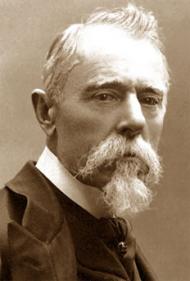Moulin Rouge is a cabaret in Paris, France.
The house was co-founded in 1889 by Charles Zidler and Joseph Oller, who also owned the Paris Olympia. Close to Montmartre in the Paris district of Pigalle on Boulevard de Clichy in the 18th arrondissement, it is marked by the red windmill on its roof. The closest métro station is Blanche.
Moulin Rouge is best known as the spiritual birthplace of the modern form of the can-can dance. Originally introduced as a seductive dance by the courtesans who operated from the site, the can-can dance revue evolved into a form of entertainment of its own and led to the introduction of cabarets across Europe. Today, Moulin Rouge is a tourist attraction, offering musical dance entertainment for visitors from around the world. The club's decor still contains much of the romance of fin de siècle France.
History
The Belle Époque was a period of peace and optimism marked by industrial progress, and a particularly rich cultural exuberance was about at the opening of the Moulin Rouge. The Exposition Universelles of 1889 and 1900 are symbols of this period. The Eiffel Tower was also constructed in 1889, epitomising the spirit of progress along with the culturally transgressive cabaret. Japonism, an artistic movement inspired by the Orient, with Henri de Toulouse-Lautrec as its most brilliant disciple, was also at its height. Montmartre, which, at the heart of an increasingly vast and impersonal Paris, managed to retain a bucolic village atmosphere; festivities and artists mixed, with pleasure and beauty as their values. On 6 October 1889, the Moulin Rouge opened in the Jardin de Paris, at the foot of the Montmartre hill. Its creator Joseph Oller and his Manager Charles Zidler were formidable businessmen who understood the public's tastes. The aim was to allow the very rich to come and 'slum it' in a fashionable district, Montmartre. The extravagant setting – the garden was adorned with a gigantic elephant – allowed people from all walks of life to mix. Workers, residents of the Place Blanche, artists, the middle classes, businessmen, elegant women and foreigners passing through Paris rubbed shoulders. Nicknamed "The First Palace of Women" by Oller and Zidler, the cabaret quickly became a great success.
The ingredients for its success:
- A revolutionary architecture for the auditorium that allowed rapid changes of décor and where everyone could mix;
- Festive champagne evenings where people danced and were entertained thanks to amusing acts that changed regularly, such as the Pétomane;
- A new dance inspired by the quadrille which becomes more and more popular: The Can-can, danced to a furious rhythm by dancers in titillating costumes;
- Famous dancers whom history still remembers: la Goulue, Jane Avril, la Môme Fromage, Grille d'Egout, Nini Pattes en l'Air, Yvette Guilbert ;
- A place loved by artists, of whom the most iconic was Toulouse-Lautrec. His posters and paintings secured rapid and international fame for the Moulin Rouge.


























